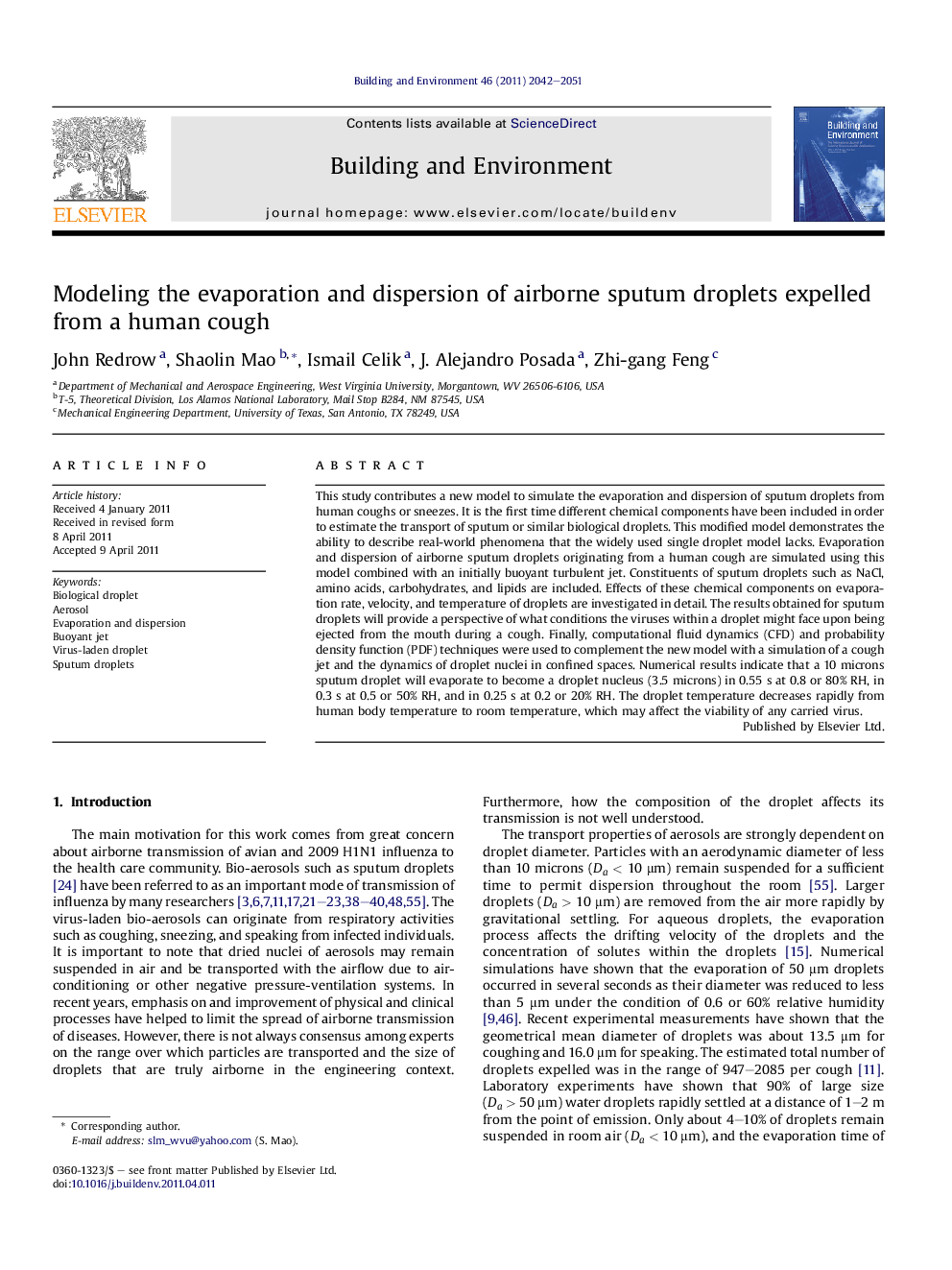| Article ID | Journal | Published Year | Pages | File Type |
|---|---|---|---|---|
| 248931 | Building and Environment | 2011 | 10 Pages |
This study contributes a new model to simulate the evaporation and dispersion of sputum droplets from human coughs or sneezes. It is the first time different chemical components have been included in order to estimate the transport of sputum or similar biological droplets. This modified model demonstrates the ability to describe real-world phenomena that the widely used single droplet model lacks. Evaporation and dispersion of airborne sputum droplets originating from a human cough are simulated using this model combined with an initially buoyant turbulent jet. Constituents of sputum droplets such as NaCl, amino acids, carbohydrates, and lipids are included. Effects of these chemical components on evaporation rate, velocity, and temperature of droplets are investigated in detail. The results obtained for sputum droplets will provide a perspective of what conditions the viruses within a droplet might face upon being ejected from the mouth during a cough. Finally, computational fluid dynamics (CFD) and probability density function (PDF) techniques were used to complement the new model with a simulation of a cough jet and the dynamics of droplet nuclei in confined spaces. Numerical results indicate that a 10 microns sputum droplet will evaporate to become a droplet nucleus (3.5 microns) in 0.55 s at 0.8 or 80% RH, in 0.3 s at 0.5 or 50% RH, and in 0.25 s at 0.2 or 20% RH. The droplet temperature decreases rapidly from human body temperature to room temperature, which may affect the viability of any carried virus.
